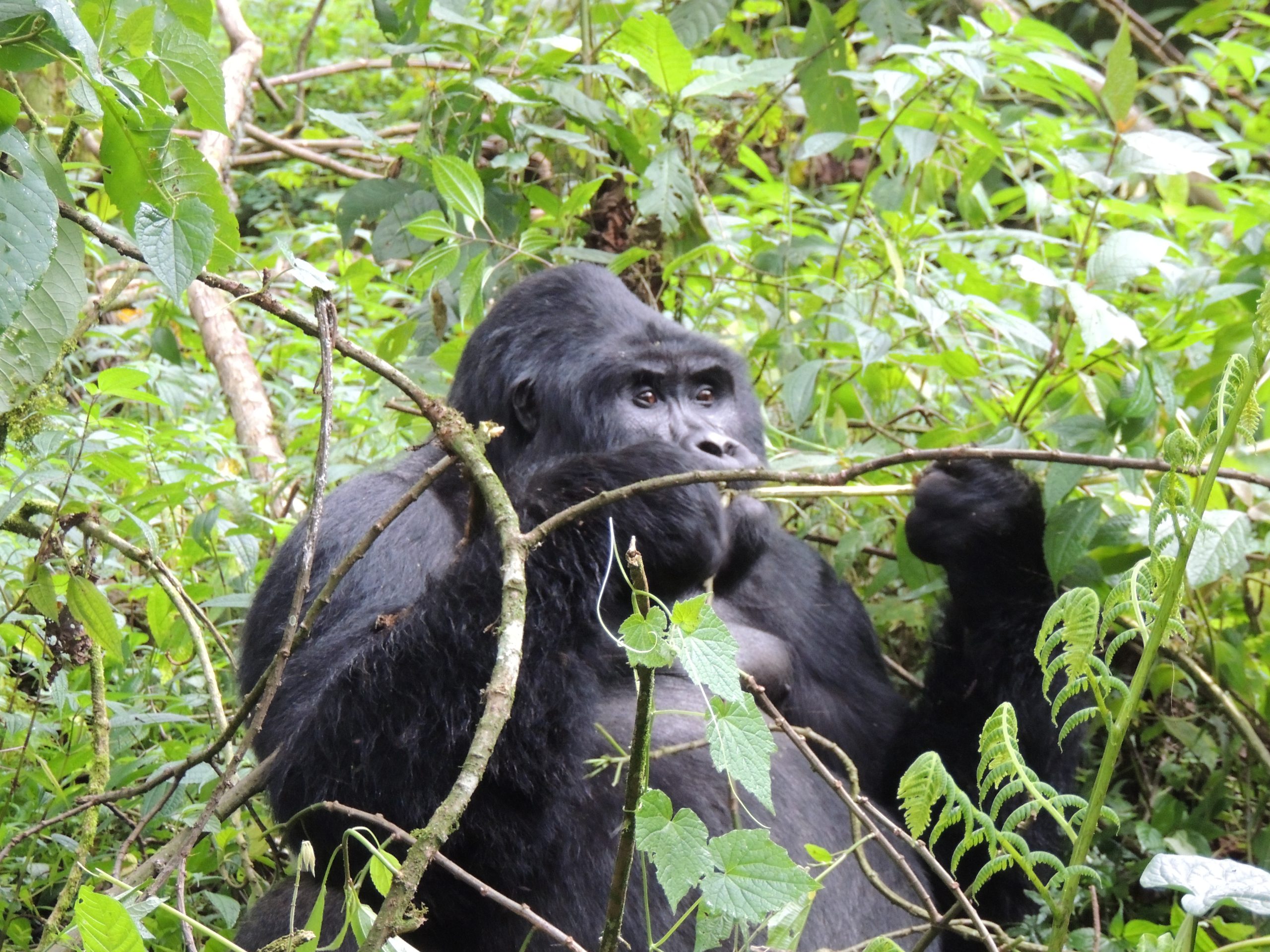Mountain Gorilla experience Mountain Gorilla experience is one of the most thrilling experiences one can…
Volcanoes National Park.

Volcanoes National Park is a captivating, biodiverse conservation area in Rwanda. The park occupies the northwest provinces of Rwanda covering an area of up to 160 square kilometers. It is an outstanding destination due to the breathtaking extinct volcanoes it hosts that add to the overall beauty.
The outstanding volcanic landscapes include five of the eight Virunga mountains, that is to say mount Karisimbi, Bisoke, Mikeno, Nyiragongo, and Sabyinyo. The slopes of these mountains are covered with moist evergreen flora that is a habitat and feeding ground for a variety of animals especially primates, Wildcats, and most notably the mountain gorillas.
Volcanoes National Park is a must-visit for adventure-seeking travelers and nature enthusiasts not forgetting those seeking to uncover the awe-inspiring beauty of the heart of Africa.
History of Volcanoes National Park.
The first attempts to conserve the biodiversity of the park resulted in the gazetting of the land as a small reserve in 1925. It was mainly to protect the critically endangered mountain gorillas from poachers who seemed so determined to finish even the little remaining population of them.
They were doing this through acts like hunting them down for their next meal, cutting down their habitat in the name of firewood, and establishing settlements. Volcanoes National Park was the first National Park to be created on the African continent and boasts as the pioneer of conservation efforts.
The park was extended further into Rwanda by the Belgians in 1958 though they faced a lot of resistance from locals. In 1967, a renowned researcher Dian Fossey founded the Karisoke Research Center to further study the gorillas which led to the habituation processes and opened the door for gorilla tourism activities in the region. Unfortunately, in 1992, Volcanoes National Park became a disastrous area since it was turned into a battlefield during the Rwanda civil war. Gorilla tourism was at a standstill until 1999 when peace prevailed in the country.
Uniqueness of Volcanoes National Park.
Volcanoes National Park boasts among other national parks in the country as the only National Park where visitors can have a glance at the mountain gorillas.The fact that it was the first National Park to be gazetted on the African continent further sets it apart. Travelers to the park therefore have the opportunity to get first-hand information on the species that have been conserved for decades.
Activities carried out in Volcanoes National Park.
Gorilla trekking and habituation. Volcanoes National Park is home to 13 gorilla families that can be trekked down by visitors. These are fully habituated and therefore free of human presence in their natural habitat. There are other families undergoing habituation processes that the travelers can gladly join. Mountain gorillas are the highlights of the park since most travelers to the park have the urge to indulge in gorilla tourism activities.
Volcano hiking. This is yet another exciting touristic activity travelers can indulge in when in Volcanoes National Park. Visitors choose one of the five volcanoes to climb and enjoy the hiking experience.
Research. Visitors interested in research about the biodiversity of the African continent flock to Volcanoes National Park since it is a hidden gem of concentration of a series of them. Guests can research the primates of the park especially the black and white colobus monkeys, golden monkeys, vervet monkeys, red-tailed monkeys, and the rest.
How to access Volcanoes National Park.
Volcanoes National Park is a two to three hours’ drive away from Kigali International Airport. Visitors drive through the towns of Rubavu and Musanze to access the park. Also, you
Favorable times to visit.
The dry seasons of the year are the most appropriate travel times to visit Volcanoes National Park. They are characterized by dry weather which aids uninterrupted hiking through the mountainous terrain and the thick rainforests.
The dry seasons take place every year from early June to early October and from early December to late February: It is however important to remember that the park is always open all year round for visitors and therefore they can embark on exploration activities even in the wet seasons.
The wet seasons also offer awesome experiences especially for the primate trekking since they do not move long distances due to the abundance of food in the forest.



